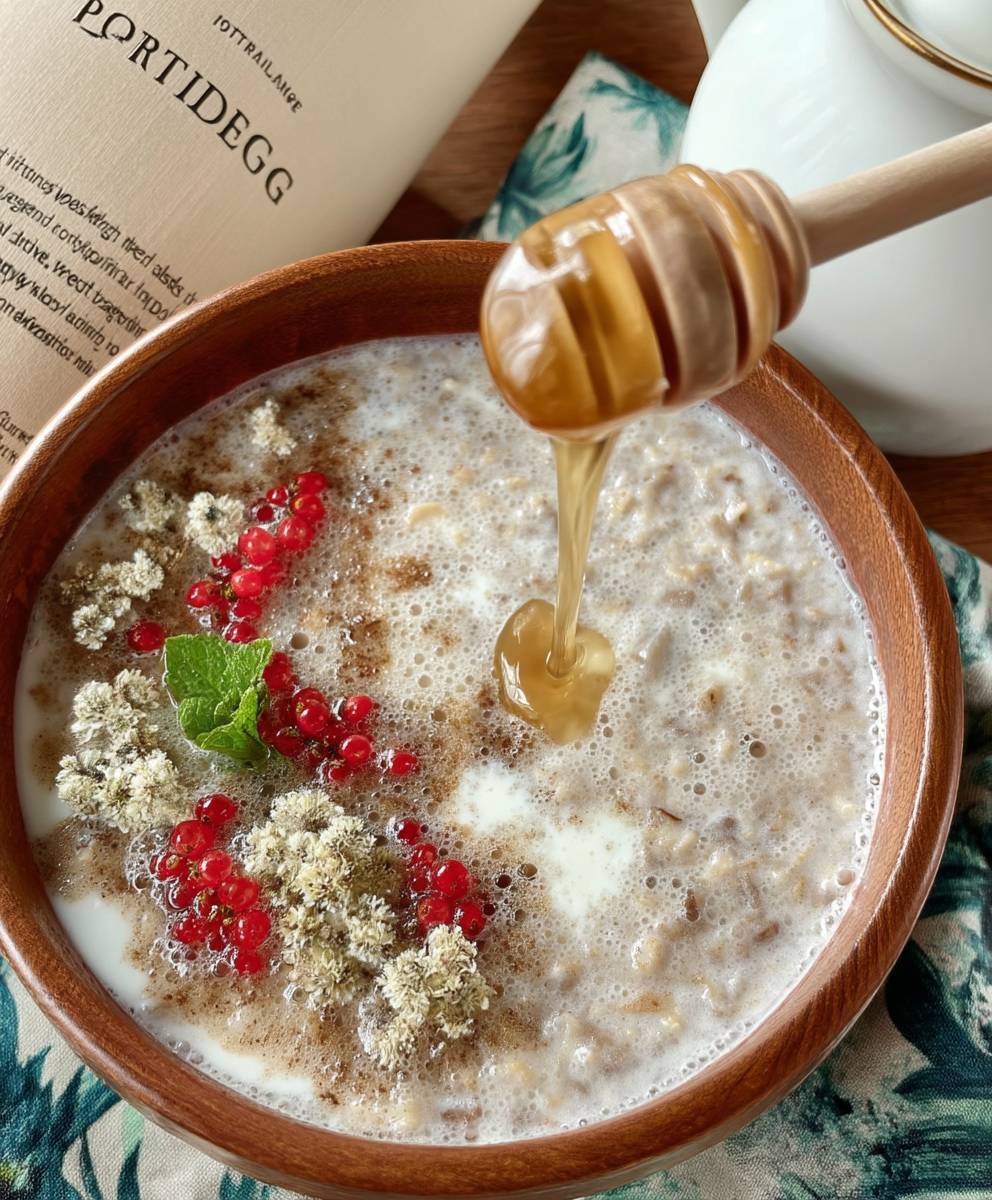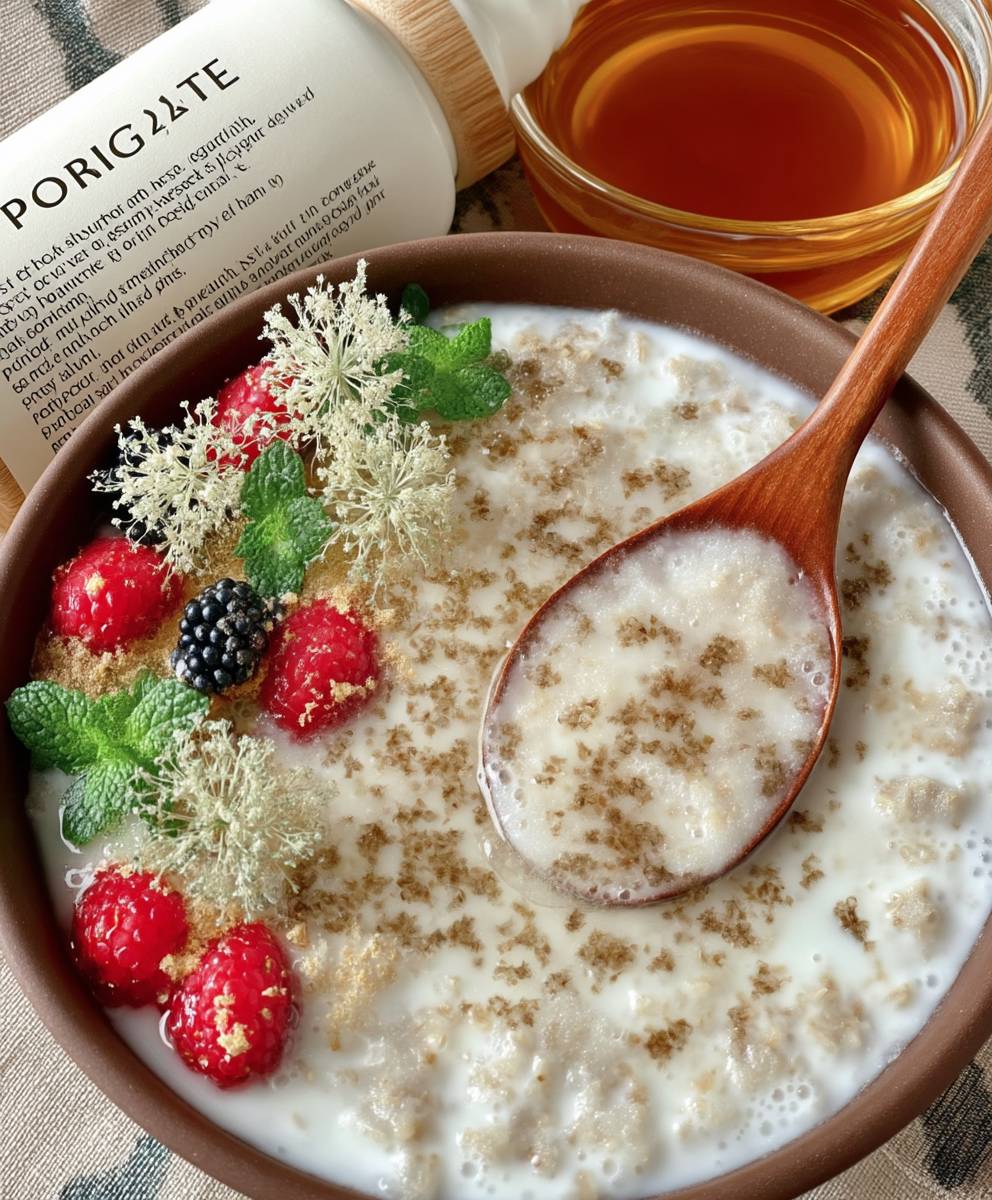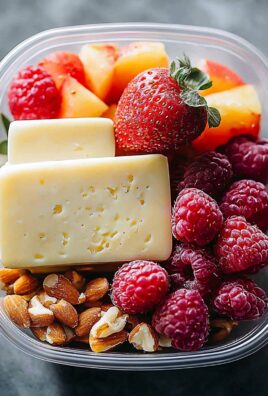World Champion Porridge: the very name conjures images of cozy mornings, comforting warmth, and, perhaps surprisingly, fierce competition! Forget bland, gloppy oatmeal; we’re talking about a breakfast (or anytime!) dish elevated to an art form. Have you ever imagined that porridge could be so delicious it wins awards? Well, prepare to be amazed!
Porridge, in its simplest form, has been a staple food for centuries, nourishing cultures across the globe. From the Scottish Highlands, where it’s a national treasure, to the rice congee of Asia, this humble dish has sustained generations. But the World Champion Porridge competition, held annually at the Golden Spurtle World Porridge Making Championships in Carrbridge, Scotland, takes this simple fare to a whole new level. It’s a celebration of tradition, innovation, and the sheer deliciousness that can be achieved with oats, water, and a whole lot of skill.
So, why do people love porridge, and why is the World Champion Porridge so special? It’s all about the creamy texture, the subtly sweet flavor, and the incredible versatility. Its a blank canvas for your culinary creativity! Whether you prefer it with a drizzle of honey, a handful of berries, or a sprinkle of nuts, porridge is a comforting and satisfying meal that can be enjoyed any time of day. And when prepared with the care and expertise of a world champion, it becomes an unforgettable culinary experience. Let’s dive into a recipe that will bring a taste of that championship glory to your own kitchen!
Ingredients:
- 1 cup (80g) Scottish Oats (medium ground)
- 2 ½ cups (600ml) Water
- ½ teaspoon Sea Salt (or to taste)
- 1 tablespoon Honey (optional, for serving)
- 1/4 cup Heavy Cream (optional, for serving)
- Fresh Berries (optional, for serving)
Preparing the Porridge: The Key to Creamy Perfection
Okay, let’s get started! Making truly exceptional porridge is all about technique and patience. Don’t rush the process; trust me, it’s worth it. We’re aiming for a creamy, smooth texture that’s a world away from the gloopy stuff you might have had before.
- Combine Oats and Water: In a medium-sized, heavy-bottomed saucepan, combine the Scottish oats and water. The heavy bottom is crucial to prevent scorching, which can ruin the flavor of your porridge. Give it a good stir to ensure all the oats are submerged.
- Add Salt: Now, add the sea salt. Don’t skip this step! Salt enhances the natural sweetness of the oats and balances the flavors beautifully. You can adjust the amount to your liking, but ½ teaspoon is a good starting point.
- Bring to a Gentle Simmer: Place the saucepan over medium heat and bring the mixture to a gentle simmer. This is where the patience comes in. You don’t want a rolling boil, just a gentle bubbling.
- Reduce Heat and Stir: Once it’s simmering, immediately reduce the heat to low. This is absolutely critical! The goal is to cook the porridge very slowly and gently.
- The 30-Minute Stir: Now, the most important part: stirring. You need to stir the porridge almost constantly for the next 30 minutes. I know, it sounds like a lot, but it’s what creates that incredible creamy texture. Use a wooden spoon and scrape the bottom and sides of the pan to prevent sticking and burning. The constant stirring releases the starches in the oats, resulting in a smooth, velvety consistency. Don’t just stir in circles; use a figure-eight motion to ensure even cooking.
- Adjust Consistency: After 30 minutes, check the consistency of the porridge. It should be thick and creamy, but still pourable. If it’s too thick, add a little more water, a tablespoon at a time, until you reach your desired consistency. If it’s too thin, continue to simmer and stir for a few more minutes.
- Taste and Adjust Seasoning: Give the porridge a taste and adjust the seasoning if needed. You might want to add a pinch more salt, or even a tiny bit of brown sugar if you prefer a sweeter porridge.
- Rest (Optional but Recommended): If you have time, let the porridge rest for a few minutes off the heat before serving. This allows the flavors to meld together even further.
Serving Suggestions: Elevating Your Porridge Experience
Okay, the porridge is ready! Now for the fun part: serving. While the porridge is delicious on its own, adding toppings can take it to the next level. Here are a few of my favorite ways to enjoy it:
- Honey and Cream: A classic combination! Drizzle a generous amount of honey over the porridge and swirl in a dollop of heavy cream. The sweetness of the honey and the richness of the cream complement the nutty flavor of the oats perfectly.
- Fresh Berries: Add a handful of fresh berries, such as blueberries, raspberries, or strawberries. The tartness of the berries provides a lovely contrast to the creamy porridge.
- Nuts and Seeds: Sprinkle some chopped nuts, such as almonds, walnuts, or pecans, and seeds, such as chia seeds or flax seeds, for added texture and nutrition.
- Brown Sugar and Butter: Another classic! A pat of butter melting into a spoonful of brown sugar is pure comfort food.
- Fruit Compote: Top with a homemade fruit compote, such as apple compote or berry compote.
- Maple Syrup: A drizzle of pure maple syrup adds a touch of sweetness and warmth.
- Savory Porridge: For a savory twist, try topping your porridge with a fried egg, crumbled bacon, and a sprinkle of chives.
Troubleshooting: Common Porridge Problems and Solutions
Even with the best intentions, things can sometimes go wrong. Here are a few common porridge problems and how to fix them:
- Lumpy Porridge: This is usually caused by not stirring enough or adding the oats to boiling water. To fix it, try whisking the porridge vigorously with a wire whisk to break up the lumps. If that doesn’t work, you can try blending it with an immersion blender until smooth.
- Scorched Porridge: This happens when the porridge sticks to the bottom of the pan and burns. To prevent this, use a heavy-bottomed saucepan and stir the porridge frequently. If it does scorch, immediately transfer the porridge to a clean saucepan, being careful not to scrape the burnt bits from the bottom.
- Too Thick Porridge: This is easily fixed by adding a little more water, a tablespoon at a time, until you reach your desired consistency.
- Too Thin Porridge: Continue to simmer and stir the porridge for a few more minutes until it thickens up.
- Bland Porridge: Add a pinch more salt or a touch of sweetener, such as honey or brown sugar.
Variations: Exploring Different Porridge Possibilities
Once you’ve mastered the basic porridge recipe, you can start experimenting with different variations. Here are a few ideas to get you started:
- Use Different Liquids: Instead of water, try using milk, almond milk, soy milk, or even coconut milk for a richer and creamier porridge.
- Add Spices: Add a pinch of cinnamon, nutmeg, or ginger to the porridge for a warm and comforting flavor.
- Add Dried Fruit: Stir in some dried fruit, such as raisins, cranberries, or apricots, during the last few minutes of cooking.
- Add Nuts and Seeds: Add some chopped nuts, such as almonds, walnuts, or pecans, and seeds, such as chia seeds or flax seeds, during the last few minutes of cooking.
- Chocolate Porridge: Add a tablespoon of cocoa powder and a tablespoon of sugar to the porridge during the last few minutes of cooking.
- Savory Porridge: Cook the porridge with vegetable broth instead of water and top with savory toppings, such as a fried egg, crumbled bacon, and a sprinkle of chives.
Choosing Your Oats: A Guide to Different Varieties
The type of oats you use will significantly impact the texture and cooking time of your porridge. Here’s a breakdown of the most common types:
- Scottish Oats (Medium Ground): These are traditionally used for making porridge and have a slightly coarser texture than rolled oats. They require a longer cooking time but result in a creamy and slightly chewy porridge. This is what we’re using for this recipe!
- Rolled Oats (Old-Fashioned Oats): These are oats that have been steamed and rolled into flakes. They cook more quickly than Scottish oats and have a softer texture.
- Quick-Cooking Oats: These are rolled oats that have been processed even further, making them cook even faster. However, they can become mushy if overcooked.
- Steel-Cut Oats (Irish Oats): These are whole oat groats that have been chopped into smaller pieces. They have a very chewy texture and require a longer cooking time than other types of oats.
For the best results, I recommend using Scottish oats for this recipe. However, you can substitute rolled oats if you prefer. Just be sure to adjust the cooking time accordingly.
Storage and Reheating: Making Porridge Ahead of Time
Porridge is a great make-ahead breakfast option. Here’s how to store and reheat it:
- Storage: Let the porridge cool completely before transferring it to an airtight container. Store it in the refrigerator for up to 3 days.
- Reheating: To reheat the porridge, add a splash of water or milk and microwave it for 1-2 minutes, stirring occasionally, until heated through. You can also reheat it on the stovetop over low heat, stirring frequently.
Nutritional Benefits: Why Porridge is a Healthy Choice
Porridge is not only delicious but also packed with nutrients. Here are some of the health benefits of eating porridge:
- High in Fiber:

Conclusion:
So there you have it! This isn’t just any porridge; it’s a journey to breakfast bliss, a hug in a bowl, and a taste of what it means to be a World Champion. I truly believe this World Champion Porridge recipe is a must-try for anyone looking to elevate their morning routine or simply seeking a comforting and delicious meal. It’s more than just oats and milk; it’s a symphony of textures and flavors that will leave you feeling satisfied and energized.
Why is it a must-try? Because it’s incredibly easy to make, uses readily available ingredients, and delivers a taste experience that’s far beyond ordinary. The combination of the creamy oats, the subtle sweetness, and the optional toppings creates a breakfast that’s both nourishing and indulgent. Forget those bland, boring bowls of porridge you might have had in the past; this recipe will completely change your perception of what porridge can be.
But the best part? It’s incredibly versatile! Feel free to experiment with different toppings to create your own signature bowl. For a truly decadent experience, try adding a dollop of clotted cream and a drizzle of honey. If you’re feeling adventurous, a sprinkle of toasted nuts and seeds will add a delightful crunch. And for those who prefer a more fruity flavor, fresh berries, sliced bananas, or even a compote of your favorite fruits are all fantastic additions.
Serving Suggestions and Variations:
* For a Vegan Option: Simply substitute the milk with your favorite plant-based alternative, such as almond milk, soy milk, or oat milk. You can also use maple syrup or agave nectar instead of honey.
* For a Gluten-Free Option: Ensure that you are using certified gluten-free oats.
* Spice it Up: Add a pinch of cinnamon, nutmeg, or ginger to the porridge while it’s cooking for a warm and comforting flavor.
* Savory Porridge: Believe it or not, porridge can also be enjoyed as a savory dish! Try adding some sautéed mushrooms, spinach, and a sprinkle of Parmesan cheese for a hearty and satisfying meal.
* Overnight Oats: Prepare the porridge the night before and store it in the refrigerator for a quick and easy breakfast in the morning.I’m confident that once you try this recipe, it will become a staple in your kitchen. It’s perfect for busy weekdays when you need a quick and nutritious breakfast, or for lazy weekends when you want to indulge in a comforting and satisfying meal. It’s also a great way to use up any leftover fruit or nuts you might have on hand.
So, what are you waiting for? Grab your oats, your milk, and your favorite toppings, and get ready to experience the magic of World Champion Porridge. I can’t wait to hear what you think! Please, try this recipe and share your experience with me! Let me know what toppings you used, what variations you tried, and how much you enjoyed it. Your feedback is invaluable, and I’m always eager to learn from your culinary adventures. Share your photos and stories on social media using #WorldChampionPorridge I’d love to see your creations! Happy cooking, and happy eating!
World Champion Porridge: The Ultimate Guide to Making It
Creamy, comforting Scottish porridge made with simple ingredients and patient stirring. Top with honey, cream, and berries for a delicious, nutritious breakfast.
Ingredients
- 1 cup (80g) Scottish Oats (medium ground)
- 2 ½ cups (600ml) Water
- ½ teaspoon Sea Salt (or to taste)
- 1 tablespoon Honey (optional, for serving)
- 1/4 cup Heavy Cream (optional, for serving)
- Fresh Berries (optional, for serving)
Instructions
- Combine Oats and Water: In a medium-sized, heavy-bottomed saucepan, combine the Scottish oats and water. Stir to ensure all oats are submerged.
- Add Salt: Add the sea salt.
- Bring to a Gentle Simmer: Place the saucepan over medium heat and bring the mixture to a gentle simmer (not a rolling boil).
- Reduce Heat and Stir: Immediately reduce the heat to low.
- The 30-Minute Stir: Stir the porridge almost constantly for the next 30 minutes. Use a wooden spoon and scrape the bottom and sides of the pan to prevent sticking and burning. Use a figure-eight motion to ensure even cooking.
- Adjust Consistency: After 30 minutes, check the consistency. It should be thick and creamy, but still pourable. If it’s too thick, add a little more water, a tablespoon at a time. If it’s too thin, continue to simmer and stir for a few more minutes.
- Taste and Adjust Seasoning: Taste and adjust the seasoning if needed.
- Rest (Optional): Let the porridge rest for a few minutes off the heat before serving.
- Serve: Top with honey, cream, fresh berries, nuts, seeds, brown sugar, butter, fruit compote, maple syrup, or savory toppings.
Notes
- Using a heavy-bottomed saucepan is crucial to prevent scorching.
- Constant stirring is key to achieving a creamy texture.
- Adjust the amount of water to achieve your desired consistency.
- Scottish oats are recommended, but rolled oats can be substituted (adjust cooking time accordingly).
- Porridge can be stored in the refrigerator for up to 3 days and reheated with a splash of water or milk.




